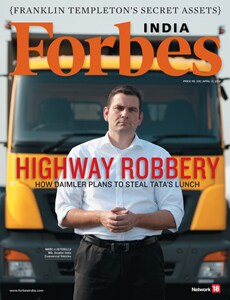
Letter From The Editor : The Coming Revolution on Indian Roads
In the last decade, two enabling factors have begun to transform the logistics landscape in India. Better roads have reduced transit times. Technology is starting to play a role too
If you’re on any of India’s national highways, the sight of an overloaded truck travelling at a sedate pace is pretty common. Truckers seldom cover more than 300 km a day, compared to more than 1,000 km a day in the West, at speeds no more than 25 km an hour. Even today, a truck travelling from Delhi to Kolkata—a distance of about 1,500 km—has to cross five state border check-posts and ends up taking upwards of four days. For decades, these inefficiencies were taken for granted every time goods had to be moved from one place to another across the country.

New generation trucks that simply don’t break down have added a whole new dimension. This is why Ashish K. Mishra’s gripping cover story on the battle between India’s largest automotive firm Tata Motors and world’s biggest commercial vehicle maker Daimler is so crucial. It marks a major inflexion point in the market. Well before the planned Daimler launch in July this year, Tata Motors had begun to roll out a spanking new range of trucks that didn’t need servicing for more than 30,000 km at a time. Daimler’s entry—and before that Volvo and Mahindra-Navistar—could help further reduce downtime, push up average speeds to 40 km a hour, plus provide more comfortable cabins for the driver.
And finally, if political consensus emerges on the Goods and Services Tax (GST), it could dramatically transform the future of the logistics and warehousing industry—and thereby make the Indian economy a lot more efficient. You can count on us to keep you on the inside track of this road revolution.
Best,
Indrajit Gupta
Editor, Forbes India
Email: indrajit.gupta@network18online.com
Twitter id: @indrajitgupta
(This story appears in the 13 April, 2012 issue of Forbes India. To visit our Archives, click here.)














